Email Marketing
How an Email Preference Center Increases Engagement and Reduces Churn
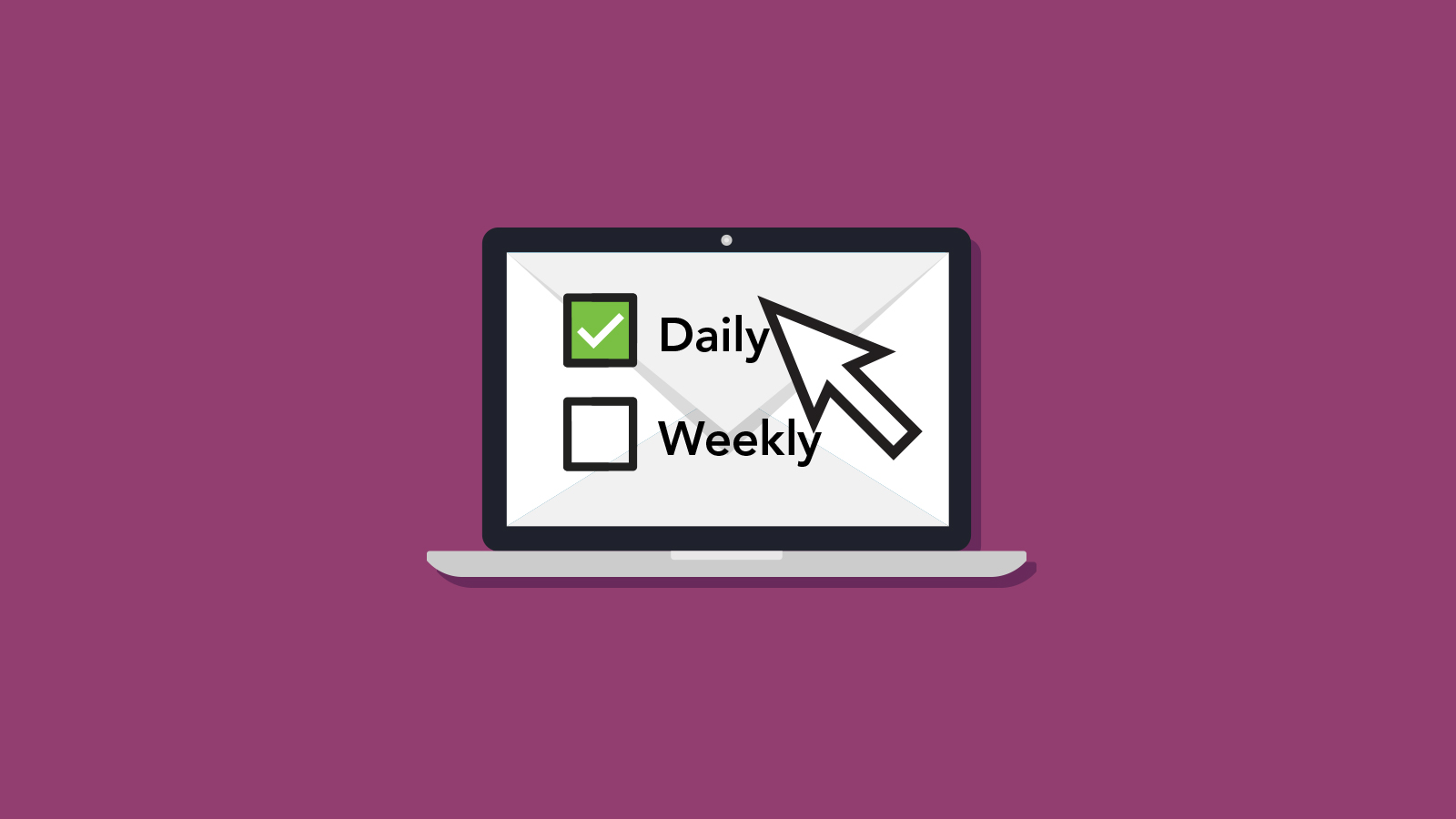
Email Marketing

Unsubscribes sting. You work hard to grow your list. You work even harder to deliver valuable content to your subscribers.
And in spite of all that, when people unsubscribe, they cite reasons like “I get too many emails from you.” Arrgghhh! If only you had a way to let email subscribers have a say in the frequency and content of your email communications to them.
Well – you do have a way. It’s called an email preference center.
By establishing and using an email preference center, you can give your subscribers a way to tailor their email experience with your company and give them a voice in what they receive. When you do this, people may end up choosing to hear from you more often, not less, simply because you have now given them some control over their experience.
Let’s look at a few email preference center examples and best practices to see how this works. Find out how you can use yours to reduce unsubscribes and customer churn while improving the subscriber experience.
An email preference center gives subscribers control over the frequency and content of the emails they receive from a particular company. You could view it as a souped-up version of an unsubscribe page.
Typically, subscribers can access the preference center link from the footer of the email. It may say something like, “manage preferences.” If your company has a working email preference center, clicking on the unsubscribe link should take subscribers to the same place. See what else should be in your email footer.
So, picture one of your subscribers. They’re feeling unhappy, overwhelmed, annoyed, fed up, “done,” or some other negative emotion. And today, they have decided to take it out on you by unsubscribing. Okay, it’s not quite that malicious. But the point is, for whatever reason, they are either determined to unsubscribe, or are leaning heavily in that direction.
Once they arrive in the preference center, they’ll be given some choices they may not have expected. Those choices might include:
Now, there are some people out there who think hearing from a company once a month is still “too many emails.” For that type of person, there is no cure. They really are done with you. And that’s fine – if they don’t find your content valuable or useful, there’s no reason for them to stay.
But most people will appreciate being given options they weren’t expecting. And if they still have any affinity for your brand, they may decide to alter their subscriber preferences rather than completely sever the relationship. This relatively simple addition to your strategy can have a profound impact on your email marketing metrics.
You can usually build an email preference center landing page using a CRM platform like Hubspot, Pardot, or Salesforce.
Your email list is extremely valuable. You can use it for immediate offers, deals, sales, updates, and announcements. And you can use it for long-term revenue growth, and customer loyalty.
It’s in your best interests to grow and sustain the quality and size of your email list. By instituting an email preference center, you can:
When a subscriber begins the process of removing themselves from an email list, they’re fixated. They’re focused. They have one goal – get off the list.
A preference center interrupts that fixation by respectfully proposing an additional set of choices to what the subscriber probably assumed was a black and white decision – either stay on the list or unsubscribe from it.
By giving them more choices, you halt their march towards the unsubscribe, and make them at least ponder and consider remaining on your list, even with adjusted subscription preferences. It’s a reasonable request.
The email preference center says, in effect, “Are you sure you want to unsubscribe? Consider these options before you do.”
In a given month, how many people unsubscribe from your list? Suppose it’s 100. If a preference center leads to even just a few of those people deciding to remain on your list and simply adjust their preferences, that’s a nice win. Month after month, year after year, you will retain subscribers you would have otherwise lost – and under terms they’ve selected themselves.
You will no longer be annoying them with unwanted messages – as long as you adhere to the preferences they have selected. Don’t blow this second chance to retain their trust, as well as their subscription, by sending them stuff they explicitly said they didn’t want.
Zero-party data is a relatively new term that aligns with more common terms like first-party, second-party, and third-party data. Zero-party data is any information about a customer, subscriber, or lead that is voluntarily given. It is the most valuable kind of data, because you know it’s most likely true since they chose to share it.
When a subscriber adjusts their choices in your email preference center, they’re giving you zero-party data. They may be sharing topics of interest, indications about their occupation, insights into their lifestyle, and much more depending on the types of preferences and choices you put before them.
This is a way to find out more about your list. And remember – not everyone visits your preference center because they were thinking about unsubscribing. That’s only one reason. You could create entire email marketing campaigns just to promote your preference center. And the reason to do this is to collect zero-party data – the most accurate information about your subscribers.
With accurate subscriber data, you can plan more effective list segmentation campaigns, with more personalization in your email program.
Subscribers who select particular email lists, topics, and other preferences are telling you what kinds of emails they want to receive. They’re telling you to cater to them, and how to do it!
What more could an email marketer want? With accurate list segments, self-selected by subscribers, we can all be happy. See 8 email segmentation tips.
With improved segmentation, your email engagement will also improve. Subscribers will now be receiving emails they’ve explicitly asked for. So as long as you deliver on the promise, how can they not engage at a higher level?
Your email content will be more relevant. Your subject lines will speak to their interests. You’ll get more opens, and more clicks. But the other reason your engagement metrics go up is because subscribers won’t be receiving the emails they are unlikely to engage with.
A huge benefit of this increased engagement is a stronger sender reputation, which means better email deliverability. When mailbox providers such as Gmail, Outlook, and Apple Mail see the their users are regularly opening and interacting with your emails, they’re less likely to filter your emails into the spam folder.
At the end of the day, this is the goal – to deliver a better inbox experience for more subscribers. With an email preference center put to good use, that’s exactly what will happen.
You’ll give subscribers more of what they want, and less of what they don’t. Everyone wins.
Any company with a sizable email list that wants to personalize their email marketing and reduce unsubscribes can benefit from an email preference center.
But, there are some situations where you might not be ready for one, such as:
In this situation, you just need to focus on encouraging more people to opt-in to grow your list. The work it takes to establish an email preference center isn’t your top priority. Only a tiny handful of new subscribers will use it at this point.
If you only send one or two emails per month, there’s no need for a preference center. For that subscriber claiming they “get too many emails from you” even though you’re only sending one per month, a preference center isn’t going to fix that.
If you only use email for transactional messages and newsletters for a general audience, an email preference center won’t make much sense, because what choices are you going to offer them? If they don’t want your newsletter, what else is there?
If you’re still here, you must be sold on the idea of email preference centers as part of your email marketing strategy. So let’s see some examples.
First, here’s an autoresponder sent by an email preference center. Not every preference center will send this specific email, but the point here is that when someone makes (or requests, in this case) changes to their preferences, they should receive an autoresponder confirming their changes and requests.

This particular autoresponder is, frankly, pretty weak. You can do better. Even just some branding would take this drab piece of default text from about a “2” up to a 4 out of 10.
Provide some context. Give some motivation for why they want to take, or not take, a particular action. Share something to look forward to about their new settings.
For email publishers who send out multiple newsletters at varying frequencies, your email preference center could look like this one from the Harvard Business Review:
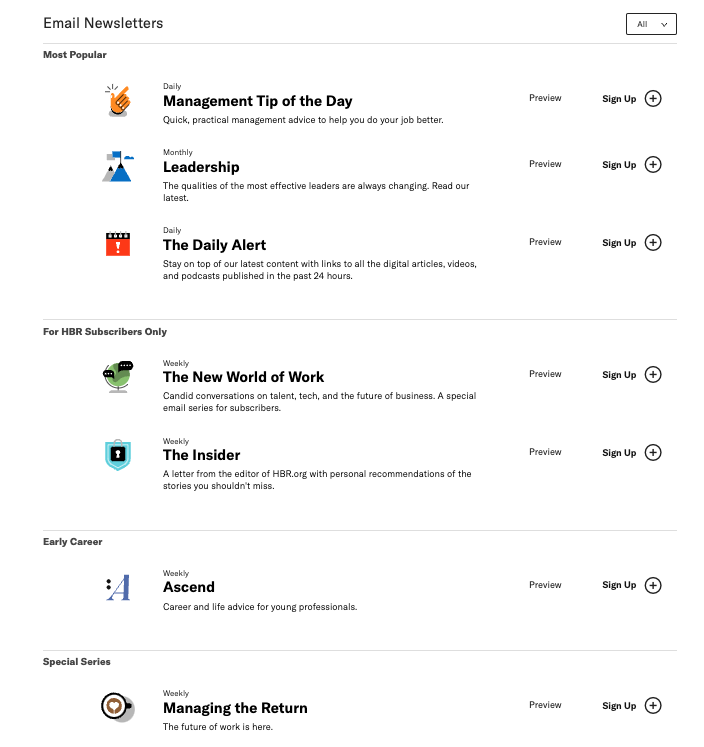
They offer several types of newsletters that would appeal to different people at different points in their careers. Each offers a preview, an easy way to sign up, and a note about the frequency. Some are daily, some are weekly, and others are monthly.
Usability is super easy, and it serves the interests of the subscriber.
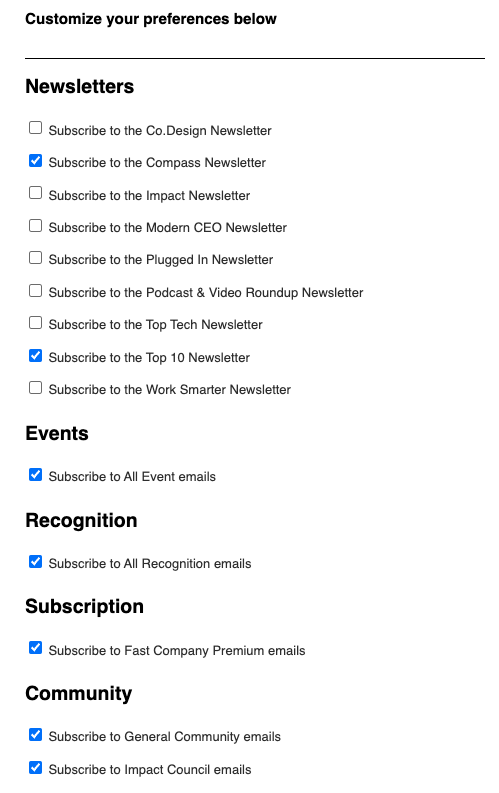
This one from Fast Company takes a similar approach, listing a great variety of newsletters the person could choose to subscribe to, as well as other specific types of emails, such as events.
This one doesn’t list how often these emails go out, which you don’t have to do if you don’t know, or if your emails don’t follow a predictable enough pattern to make that sort of promise. In other words, don’t give the option of weekly emails if you can’t or won’t deliver them weekly.
Here, you have a business selling actual products, asking their subscribers what they’d like to hear about.

This example from Rogans Shoes first lets you select your gender, which is incredibly important for a shoe store.
But in addition to that, they give options for different types of shoes, such as work boots, kids shoes, and walking shoes, plus new product updates and releases and sales.
Do you see the zero-party data here?
Someone who selects walking shoes and kids shoes is a parent who probably doesn’t need — or who already has a preferred vendor for — exercise shoes. Someone who selects work boots and hiking shoes has a very different daily lifestyle.
The segmentation and personalization potential here is salivating for any ecommerce seller who wants to more effectively engage their audience through email.
They also have a toggle for email frequency. Across the board, this preference center page accomplishes a lot in a relatively simple interface.
For software companies, the main goal of a preference center may be to find out what the subscriber needs most from you.

This preference center from TurboTax will allow email subscribers to engage to the degree that suits them by controlling the reminders and alerts they receive through automation.
Some subscribers might just want tax deadline reminders and nothing else. Such a person is handling things their way and just doesn’t want to miss any key dates.
Others might want all the other updates, but no promotions or product-related emails. That person finds great value in TurboTax’s content and wants to engage on multiple levels, but doesn’t want to be sold.

Here’s a very simple email preference center from Google Pixel, giving just two options. Helpfully, it gives an explanation of what each option involves so the subscriber can make an informed decision.
Note that it also includes a link to preference centers for other Google products. For a company with a lot of products, each of which has emails associated with them, this is a smart way to do it, rather than giving one preference center with 50 different decisions to make.
Here’s another nice touch Google sometimes adds to its emails on tech products:
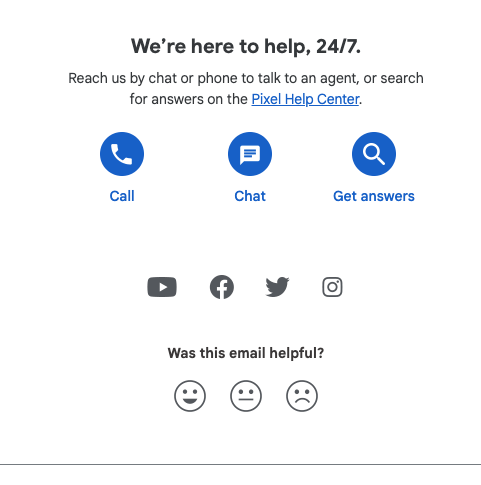
This isn’t technically a preference center image, but asking questions like “Was this email helpful?” is a good detail to add on to your emails, if you can. You can also add this to any autoresponders that come from your email preference center. That’s yet another way to improve on that “2” from earlier.
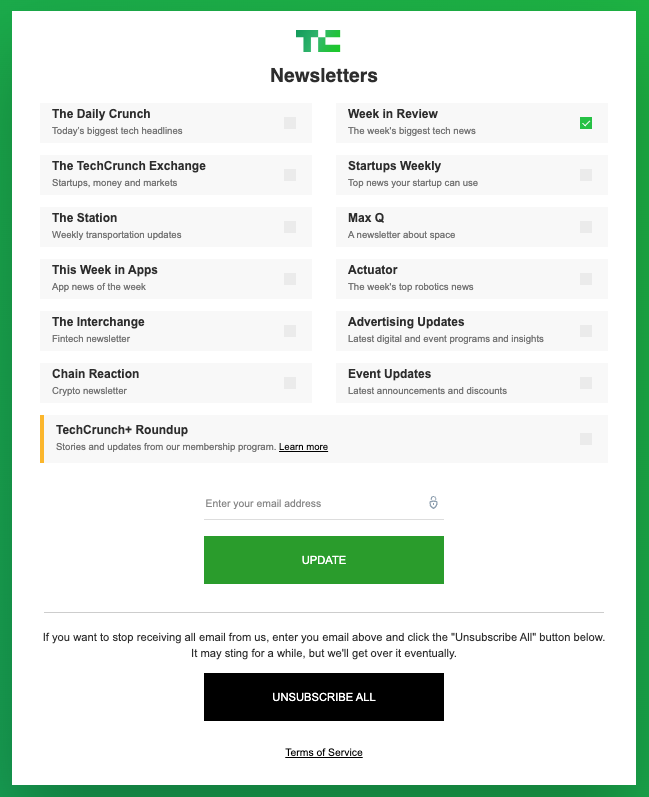
Here’s another publisher example, but we included it because, in addition to listing the many newsletters and email subscription options someone could choose, they also include a button to “unsubscribe all.”
This is a good option to include if your preference center has a lot of choices, because it increases the trust factor for subscribers who really do want out of everything. It also just makes it easier and quicker.
People unsubscribe for all sorts of reasons. In fact, here are 10 ways to annoy your subscribers. One of them is that your emails don’t display properly because you didn’t test them first. This can be annoying and frustrating, and it also might make your subscribers think you’re a spammer or scammer.
You want every single subscriber to be able to effortlessly engage with and enjoy your emails, no matter which device or platform they’re using to open and read them.
Campaign Precheck from Sinch Email on Acid allows you to pre-test your emails on dozens of platforms and devices to see how they will look before you send them, so you can address any issues first.